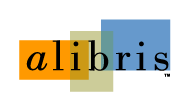Subplots or "B" Storylines
There are of course charts, graphs and stacks of books on every aspect of screenwriting. And at times it can all feel quite academic and intimidating. I know I used to feel that way about subplots. Subplot - what do you mean? I just figured out the main plot! Aaargghhh!
But think of it this way - your character has more going on in his or her life than the adventure at hand, right? Your character has or had a job, a spouse or significant other, parents, siblings - a life. So the B Story - or subplot - is going to be related to something else going on for your main character, if not something going on with another significant character in your script. It's another, lesser complication and it also adds to the lesson or journey for your main character.
Writing subplots is part of writing three-dimensional characters - the adventure happening to them does not exist in a void, right? Stuff was going on for your character before the story began and stuff will go on after the story ends. Characters cannot exist in a bell jar. Subplots not only create a more compelling, fleshed-out story, they are part of a more compelling, fleshed-out character.
Your script might have several strands or subplots that all thematically connect and relate to the main plot. A subplot doesn't necessarily have to take up much screen time but it will definitely have a beginning, middle and end.
A great way to study and really GET subplot is in sitcoms. Just because they are quite overt. Rachel and Ross decide whether to live together - subplot - Joey auditions for a part as a dinosaur. And you'll notice the connect-a-dots with the subplot interrupting the main plot only enough to play itself out pretty efficiently.
Subplots do a lot of things for your script: They flesh out the world and the characters and they also serve as a way of creating more tension in the main plot because we want to get back to THE GOOD PART and see what's going to happen! I could say a bunch of academic stuff here about how the subplot needs to be in service to the theme - but, is that academic? Or just plain obvious? Right? The subplot is some kind of version - even an opposite version - of the theme in the main plot.
Let me think of some subplot examples off the top of my head - mind you, I am only plucking out ONE subplot from these examples, of course there are more:
LEGALLY BLONDE: Elle tries to help her manicurist friend with her love life.
BEETLE JUICE: Lydia's horrible mother, Delia, is an "artist" who seeks to turn the house into an avante garde haven for her pretentious friends.
MILK: Harvey's relationship with his boyfriend is strained by his ambitions.
3:10 to YUMA: Dan Evans tries to earn his son's respect.
HOT FUZZ: Nick Angel's friendship with Danny Butterman.
SCARFACE: Tony Montana's relationships with his wife and his sister.
STAR WARS: The love triangle between Luke, Princess Leia and Han Solo.
POLTERGEIST: Craig T. Nelson's relationship with his work - the evil company that paved the burial ground in the first place.
So take a look at your script - do you have subplots going on? And are those subplots in service to the main character and the main plot? Does each of your subplots have a setup, a complication and a resolution? Does the subplot (or subplots) fit organically into the larger plot? Does the subplot speak to the theme?
Remember, subplots don't need to be complicated, necessarily. Subplots are complements to the main plot. They add nuance, complication and emotional complexity. You don't need to overthink your subplot - I'll bet you already have at least one. Just make sure you set it up, complicate it and pay it off.
If you enjoyed this post, follow me on Twitter or subscribe via RSS.
























3 comments:
Excellent examples. I can't tell you how many scripts I've read that have no subplot, or subplots that have nothing to do with the main plot. Plots should be like rivers, they make detours, currents, undertow...
PJ McIlvaine, great imagery. A poet, now ya know it. And hot to boot. The cherry on the banana split icecream extravaganza that is you.
(That was meant in a nice, positive, affirming way)
- Smiley face (E.C. Henry from somewhere up north. From where? I dunno, I forget sometimes...)
Julie, you should consider a post on subtext next. It's another critical part of great writing, and one many writers struggle with accomplishing well.
Without subplots and subtext, I don't think you can tell a great story.
Post a Comment